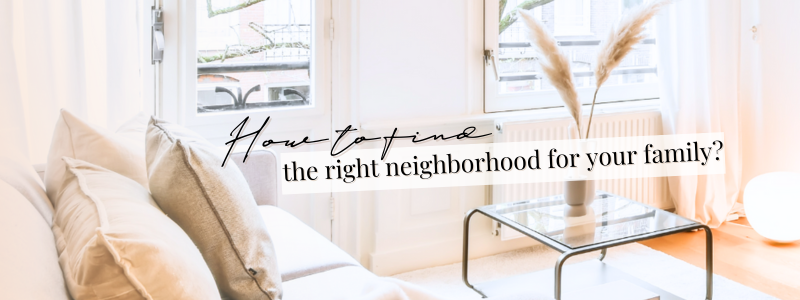
If you’re thumbing through listings and wondering how to zero in on the perfect neighborhood for your family, you’re not alone. Choosing a neighborhood is like picking out a pair of shoes — it has to be the right fit, comfort level, and style, or you’re going to end up with blisters. And I’m not just talking about the metaphorical kind! So, let’s walk through the steps to finding a neighborhood that feels like home.
Step 1: Make a List, Check it Twice
Before you even start looking, sit down with your family and list out what each of you wants. We’re talking schools, parks, coffee shops, or even the likelihood of a friendly neighbor to lend you a cup of sugar. This list becomes your neighborhood shopping list. Just like you wouldn’t hit the grocery store without knowing what you’re cooking for dinner, you don’t want to start your search without knowing what you’re looking for.
Step 2: Schools in Session
For those with kids or planning to have them, schools are often at the top of the priority list. Great schools aren’t just about academics; they’re about community, extracurricular activities, and the value they add to a neighborhood. Websites like GreatSchools.org can be super helpful, but don’t stop there. Visit the schools, chat with parents at the local playground, and get the scoop on the schools that catch your eye.
Step 3: Safety Dance
Safety is paramount. Online crime maps and local police reports can give you the lowdown on the safety of an area. But remember, numbers don’t tell the whole story. A neighborhood watch or active community groups can be reassuring signs that neighbors look out for each other.
Step 4: The Daily Commute
Unless you’ve figured out how to teleport, you’ll likely need to consider your commute. Whether it’s traffic patterns or public transportation options, test out the journey to your workplace during rush hour. A dream neighborhood loses its luster if you’re spending most of your waking hours stuck in traffic or squished in a train car.
Step 5: Budget Real Talk
Dream neighborhoods and budgets don’t always align, and that’s okay. Understanding what you can realistically afford will save you from heartache (and prevent you from accidentally falling in love with a neighborhood that’s going to break the bank). Your realtor can help you find similar neighborhoods that fit your financial picture without sacrificing your wishlist.
Step 6: Community Vibes
What makes a neighborhood truly shine is the community. Check out local community centers, libraries, parks, and cafes. See if there are neighborhood events or farmers’ markets. The vibe you get from these places can tell you a lot about whether you’ll feel at home here.
Step 7: Future Forward
Peering into the crystal ball of neighborhood development isn’t a perfect science, but it’s worth looking into any future plans for the area. Development can increase property values and amenities, but it can also mean construction noise or changed dynamics. A little research at city hall or online can give you a glimpse into the future.
Step 8: Take a Stroll
There’s no better way to get a feel for a neighborhood than by taking a stroll. Walk the streets, strike up conversations with people doing yard work or walking dogs. These spontaneous chats can provide insights no listing or website can.
Step 9: The Test of Time
Finally, visit at different times and days. A peaceful weekday morning can turn into a bustling or noisy weekend night. Make sure your serene Saturday afternoon isn’t the neighborhood’s block party night if that’s not your jam.
Wrapping It Up
Finding the right neighborhood isn’t about picking the most popular spot on the map; it’s about finding a place where your family can grow, thrive, and feel genuinely at ease. It’s the backdrop for your life’s most memorable moments, and with a little patience and a lot of legwork, you’ll find a place that’s not just a dot on a map, but a community you can call home.
There you go, house hunters! The neighborhood of your dreams is out there. Happy hunting, and may your moving boxes be light!







